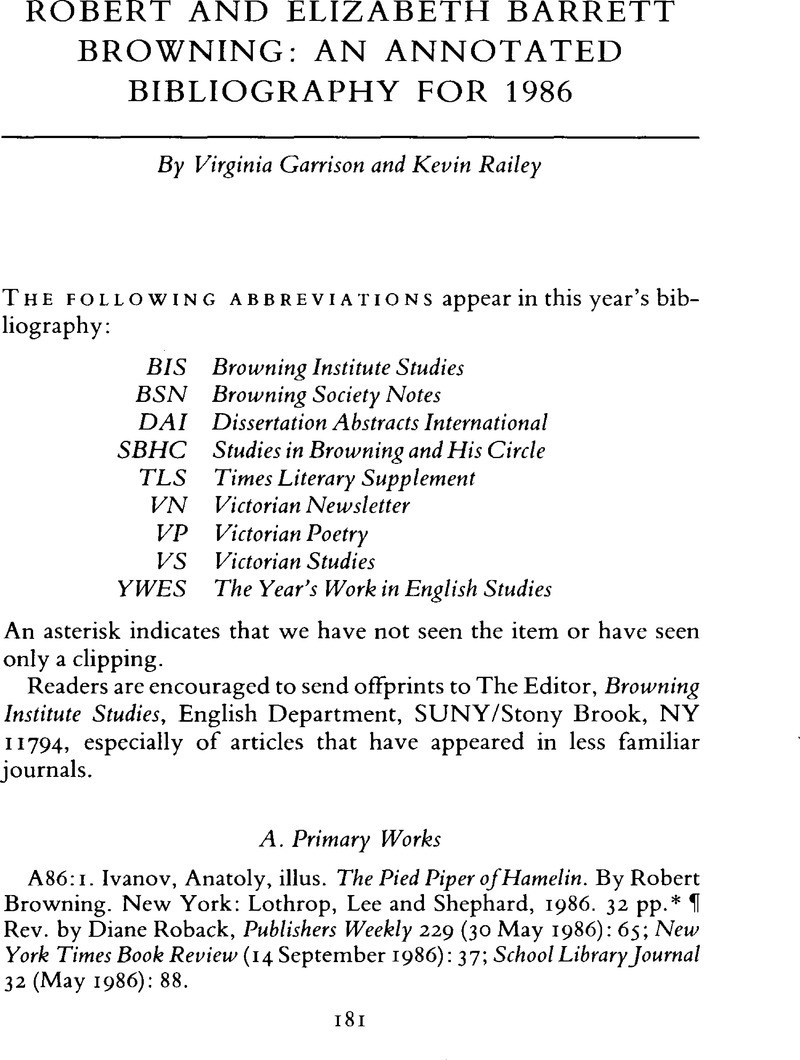C86: 23.Friewald, Bina. “
‘The world of books is still the world’: Elizabeth Barrett Browning's Critical Prose 1842–1844.”
Victorian Studies Association of Western Canada Newsletter 12.
2 (
1986):
1–
24. ¶ EBB's early prose contains the informing principles of her aesthetic theory: “the conviction that a poet's work is inseparable from his or her life, and the equally strong conviction that a certain mode of artistic and philosophical perception … is the ultimate model for knowledge of the Truth” (1). In this prose, EBB prepares the ground for
Aurora Leigh, and only through an understanding of EBB's commitment to the transcendentalist discourse – stemming for her from Carlyle – “can we fully appreciate the radical revisions which this philosophy undergoes in
Aurora Leigh … as the poem strives to reconcile the antagonistic poetic and feminine poles” (21).
Google Scholar 